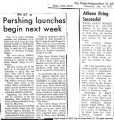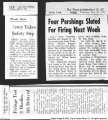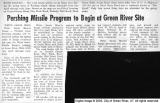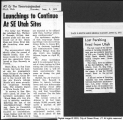| Title |
Green River Launch Complex 1971 |
| Subject |
Guided missile ranges; Ballistic missiles; Guided missiles |
| Publisher |
J. Willard Marriott Library, University of Utah |
| Date Digital |
2003-01-31 |
| Date |
1971 |
| Type |
Text |
| Format |
application/pdf |
| Format Creation |
TIFF: 400 ppi; JPEG: 72 ppi; 8-bit grayscale; Creo-Scitex Jazz+ Flatbed Scanner |
| Identifier |
A1270011048265744593.xml |
| Source |
Green River Missile Base Scrapbook |
| Language |
eng |
| Relation |
U.S. Army and White Sands Missile Range collection |
| Coverage |
Green River, Utah |
| Rights Management |
Digital image copyright 2003, City of Green River, UT. All rights reserved. |
| Holding Institution |
City of Green River, Utah |
| Source Material |
Newspaper article |
| Scanning Technician |
Louise Radcliffe |
| ARK |
ark:/87278/s6kk9bnq |
| Setname |
gr_lc |
| ID |
204988 |
| Reference URL |
https://collections.lib.utah.edu/ark:/87278/s6kk9bnq |

























